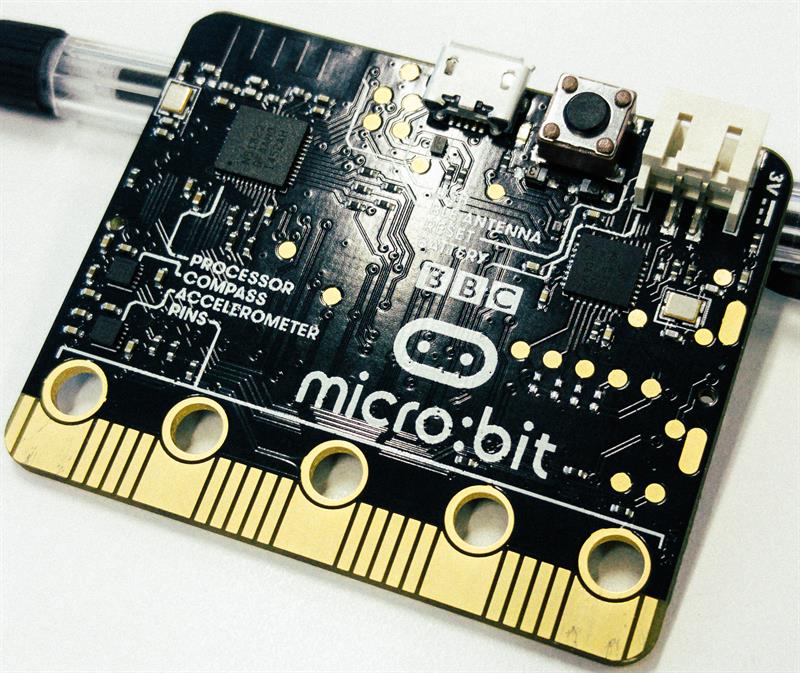One of Barack Obama’s favourite sayings about having children is that it is “like having your heart walking around outside your body”. Now imagine what it must be like for teachers and headteachers – who for a huge chunk of the working day are responsible for the well-being of dozens, if not hundreds, of children.
Given the above, it’s little surprise that Kevin Golding, applications manager at South Midlands Communications (SMC), says his company has had “quite a lot of enquiries over the last few months” from schools, generally regarding how to deal with the kind of incidents that require a lockdown and the protection of those inside without evacuating the premises. Golding describes the latter as the “absolute worst thing you want to do if someone’s got a gun”. He highlights the need to send alerts out in a discreet and covert manner and cites the way that the SMC Gateway can integrate with email in addition to two-way radio and mobile telephony.
He adds that at most of the schools SMC works in, “a relatively small amount of radios [are] used, but they’re used by non-training staff… bursars, caretakers and security [staff]”, and stresses the need to look at a school’s existing technology and use it in conjunction with radio technology.
“While we work in a business radio industry, radio isn’t always the best solution and you’ve got to be open to all types of communication out there, whether business radio or not. More importantly you’ve got to listen to the client and understand what they need and choose the right technologies.”
He notes that as all schools have Wi-Fi networks (some of them with phenomenally good Wi-Fi coverage), it makes sense to leverage them, through using Wi-Fi alert and panic buttons. Golding adds that SMC is already working with some schools to implement these “and we will integrate with pretty much any of the buttons that are available” – including hardwired ones (though Golding notes that while these are very reliable, their need for cabling makes them impractical to install).
He says SMC has “also been working with one Wi-Fi button manufacturer to increase the suitability of their product [for this] market. We’ve arranged a complete firmware upgrade and introduced location tracking, so when a button is activated we can determine whereabouts in the building that button is.” SMC also monitors the battery life of the Wi-Fi buttons and its system “can pop an email out to a bursar to let them know which units need their batteries replacing”. As the buttons are small and easy to leave in a bag, the firmware that SMC has written for them will check in with SMC every 12 hours, and if a button misses its check-in, the company can raise an alert.
Turning to another way of leveraging a school’s existing infrastructure, SMC has recently released Hotkeyz – “software that will run on every laptop and PC in the location, and in the event of an emergency, [teachers] can hit a secret [and user-definable] combination of keys, [which will] send an encrypted message over the network to the SMC gateway and then we can react to that by sending radio messages out, emails [and] SMS, etc. And when that message gets sent to us, it links into the school’s IT system and it can tell us the person that’s logged into the computer and the name of the computer on the network, which would normally indicate the location.”
It can send up to six types of alert and also works in combination with the SMC Gateway so an administrator will know if the software is running on a device that it shouldn’t be on, or has ceased communicating for any reason.
The final frontier
Another technology that is ubiquitous in schools is Bluetooth. Martin Woolley, developer relations manager, EMEA at Bluetooth SIG, says it is being used in a UK university for attendance monitoring – a wearable device allows students’ locations to be logged, essentially automating register-taking.
He also cites a college campus outside of the UK which has been using Bluetooth-enabled bracelets with scrolling text displays coupled with Bluetooth gateways to do on-campus messaging, such as reminders to attend lectures. However, Woolley adds that the gateways are no longer necessary, as “these days you’d use Bluetooth Mesh”. He explains that the institution was also using Bluetooth coupled with medical devices, such as heart-rate monitors to keep tabs on the well-being of students with known health conditions (with their full knowledge and permission).
However, Woolley says the “more interesting angle” is the use of Bluetooth as a teaching tool, particularly given the need to “prepare a new generation” for life in a world in which the Internet of Things (IoT) is already a “very concrete [and] real proposition”. He highlights Bluetooth SIG’s (now past) involvement in the BBC micro:bit, a handheld, programmable micro-computer. Woolley adds that although “the original micro:bit goals were all about really teaching kids to code”, it is now being used to help them learn about “all sorts of engineering and physics phenomena”.
After Bluetooth SIG’s involvement ceased, Woolley continued supporting the micro:bit “as a labour of love”, developing some applications – two of which are “being used quite a lot in schools all across the world” (see his website, https://bittysoftware.com).
“I’ve seen schools using the Bitty Software data logging application to collect data, which then visually illustrates how things like capacitors discharge their charge over time. They’re using an application which uses Bluetooth to collect data from a micro:bit which has an electronic circuit attached to it, so that kids can visualise what’s happening. Bluetooth collects the data from the micro:bit and it’s visualised or illustrated on the screen of a smartphone or tablet.”
He adds that it is also being used by a Canadian organisation called Let’s Talk Science, to help monitor CO2 levels in the International Space Station. “They’ve attached a CO2 monitor and a sensor to a micro:bit; the micro:bit will talk to the sensor and collects readings every second or so, and those readings get transmitted to a smartphone running the Bitty Software application, which draws nice graphs.”

The BBC micro:bit is being used in combination with Bluetooth to help educate children about engineering and physics; credit: Ravi Kotecha
Capacity matters
Turning to Wi-Fi, there are signs that it is starting to become ‘classroom-critical’. Take Wellington College. As part of its move (which began two years ago) to standardise the use of digital technology and cut down on paper-based processes, it has partnered with Microsoft on a collaborative classroom initiative. According to Tony Whelton, the college’s director of IT services and development, this involves “using our Office 365 environment to preset-up OneNote files for every subject in every year group. Everyone within the classroom has a Windows 10 digital inkable device, all working on the same workspace (Microsoft OneNote); the teacher will then use Miracast to broadcast their screen up to a projector, so all the students can see the content on the teacher’s device as well as on their own device screens.”
Although the devices running Microsoft Services run on 5GHz, the feed between the teacher’s device and the projector uses 2.4GHz, and to ensure this works without a hitch, Whelton has implemented a policy that reserves the use of 2.4GHz in the classroom purely for this service. Some resilience comes from the fact that when the college moved to Wi-Fi 5 (802.11ac), it had an access point in every classroom. This means that “in the unlikely event an access point goes down, you’ll still get bleed-through and meshing from the neighbouring room”.
Whelton adds that Wellington College hosts lots of external events (including the annual Festival of Education, which has “the best part of 3,000 guests all with their wireless devices”). But it was a new tiered theatre in the college’s performing arts facility, which had the “potential for having a lot of users in very close proximity”, that prompted its latest investment: Wi-Fi 6 (802.11ax) access points from Aerohive. Part of the thinking behind it was some previously encountered issues with very high-density areas and the need to future-proof the college as much as possible.
The Wi-Fi 6 access points can provide high-bandwidth access, including video-streaming capability, to more than 2,500 connected devices in the performing arts facility, while also supporting the teaching and learning needs of 1,100 students and staff across the college’s 400-acre campus.
“With 802.11ax access points, it’s not just planning for the future, it’s about handling huge numbers of legacy clients (802.11ac and below) with little effort,” says Whelton. “The power of these access points, combined with the flexible dual 5GHz radios, means we can provide the best possible service for 802.11n and 802.11ac clients, while being ready to deliver additional capacity for a 802.11ax environment.”
Of course, just as a tree’s branches and leaves would die without its roots, so is a Wi-Fi network dependent on a good switching network and a suitable amount of backhaul. In the case of Wellington College, Whelton says that fortunately for the Wi-Fi 6 project, in the past 12 months it also carried out a switch upgrade.

Wellington College is using Wi-Fi 6 (802.11ax) access points to meet the need for high capacity in the G W Annenberg Performing Arts Centre; credit: Studio Seilern Architects
Our scene shifts to Bedales School, a co-educational, boarding and day independent school, split into three (Bedales and its sister schools Dunhurst and Dunannie). Its 120-acre rural site is located in the village of Steep, near the market town of Petersfield in Hampshire. There, an ICT infrastructure upgrade in the summer of 2017 dramatically boosted the reliability of its Wi-Fi network (consisting of Aerohive 802.11ac access points) through improvement to the underlying switch infrastructure.
Reece Percival, the school’s head of ICT, explains that the latter had been prone to problems, including “the occasional issue with rodent damage” and had no redundancy. When the time came to upgrade, two obstacles had to be overcome: the fact that the network infrastructure had been gradually installed over a 10-year period in “a bespoke fashion”; and the lack of documentation – “We had a lot of human knowledge, but no definitive plans of where all our fibre was.” This required a full site audit, which took place in March 2017, and then the school and LAN3 designed the new network. Once the fibre work had been done by a third party, LAN3 rolled out Dell EMC switches, and redundant links were added to all network cabinets. One benefit from this upgrade was that the increase in reliability has allowed the use of Wi-Fi calling. This is particularly useful given the school’s rural location, which means it doesn’t have good 3G/4G coverage across the whole site.
From what we have seen, wireless comms have an increasingly central role in protecting staff and pupils while also becoming an integral part of the classroom experience. At the same time, it is to be hoped that the latter, in combination with devices such as the BBC micro:bit, help inspire young curious minds, thereby securing the next generation of RF engineers.



